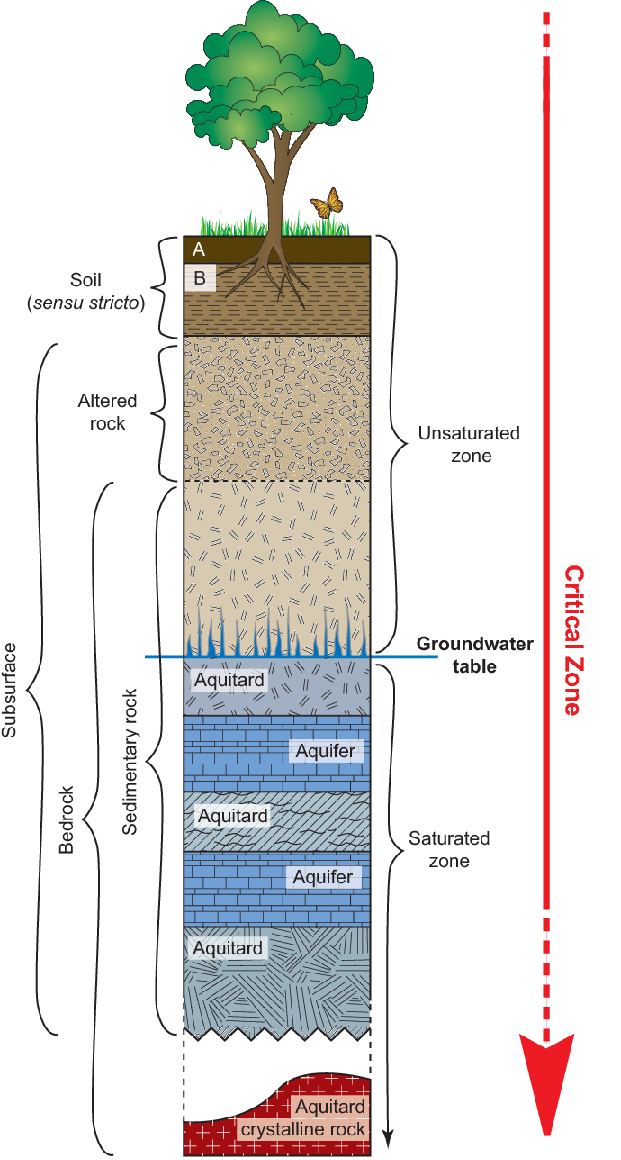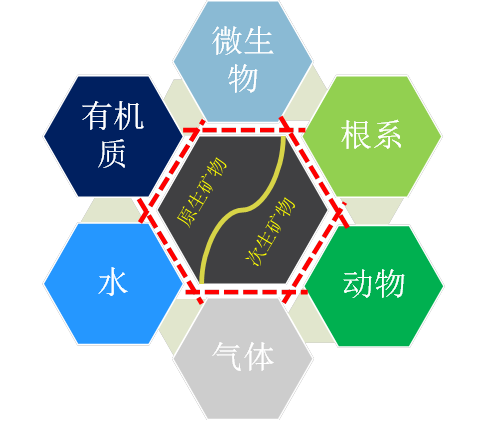Surface earth system is an integral planet unit comprising pedosphere, atmorphere, hydrosphere, and biosphere that are interconnected by disturbance-feedback loops and function as a whole. As such, scientific endeavors probing the behavior of surface earth system need to adopt an integrated and multidisciplinary approach. For the past two centuries, studies in individual disciplines, such as soil science, atmorspheric science, water science, have significantly expanded our understanding in the status of the constituent components of the system, but exhibited limitations in establishing a comprehensive grasp of the surface earth system when faced with the new challenge of global environmental changes arising from human activities. Such lack of unified approach promted global scientific community in 2001 to propose a new discipline, critical zone science, to advance research in surface earth system. The critical zone (CZO) is a near-surface environment extending vertically from forest canopy to the bottom of groundwater (Fig. 1).

Complicated and intertwining interactions amongst rocks, soils, water, lives, and air occur within CZO to control and regulate environments and maintain habitable conditions for human society. This very nature of CZO requires organized collaborations between geoscientists, ecologiests, biologists, and environmental scientists if we are to gain a deep and full-scale understanding of surface earth system for future sustainable development and growth.
Essential scientific questions to be addressed by CZO science are plenty, and may include flow processes of gaseous and fluid phases, migration of suspended and particulate matters, nutrient cycling and ecosystem vitality, geochemistry of soil resource replenishment, and co-evolution of lives and minerals. However, the underlying knowledge base needed to solve these problems relies on a clear understanding in CZO structure, components, and funcationality. As complex as they are, CZO processes can be categorized into three types, ecological, biogeochemical, and hydrological. Ecological process concerns the cycling and transformation of life-essential matters and energy in surface earth system; on the other hand, biogeochemical process links inorganic and biological reactions to assess the source, transport, spatial-temporal variation of macro-and micro-nutrients. Finaly, hydrological process takes responsibility to ensure the migration of materials within CZO in a manner that sustains the chemical and biological interactions needed to support the vigor of the surface earth system.
While it is important to understand the role of each of the CZO processes in keeping the health of CZO, it is critical to develop an astute view of how these processes operate in nature. A key element of CZO activity is the chemical reactions at the solid-fluid-biology interfaces. These interactions are responsible for activating/passivating meterials and energy flow at the microscopic scales and in a sense are the driving forces of CZO processes. Research themes at the center for interfacial processes and pedosphere evolution (CIPPE)

focus precisely on these interfacial reactions with a goal to understand the microscale pathways and mechanisms for cycling of matters (e.g. macro- and micro-nutrient elements) and energy (e.g. redox reactions) in soil and coastal wetland CZOs.
CIPPE Mission
Develop the microscopic view and mechanistic insight for CZO processes in pedosphere through targeted research at mineral-water-biology interface using physiochemical principles and state-of-the-art analytical techniques.